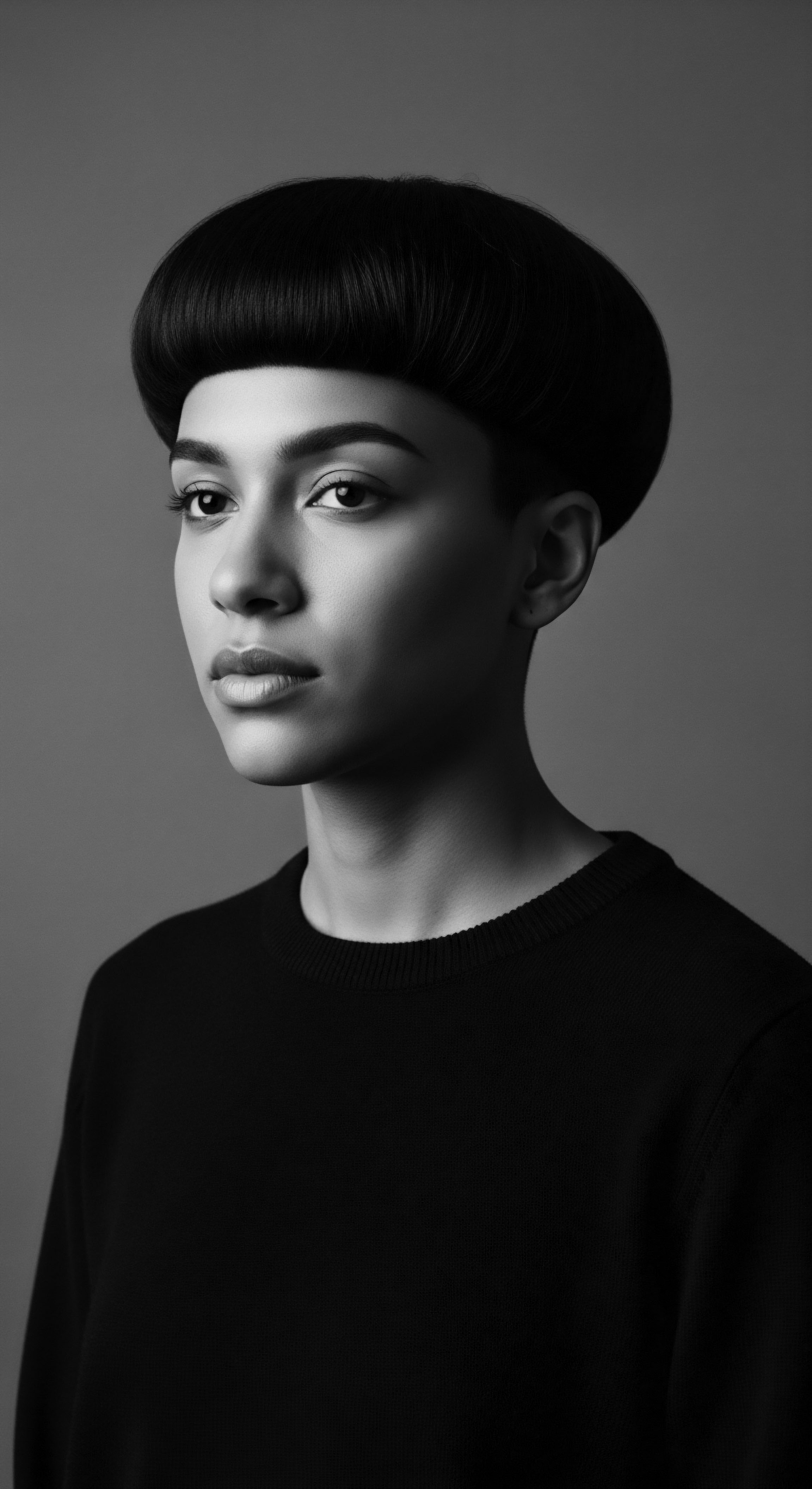
Roots
The story of textured hair care tools is not merely a chronicle of objects. It is a resonant echo from deep within our collective memory, a journey tracing the human hand’s earliest gestures of care to the specialized instruments that grace our vanities today. For individuals whose ancestral lines intertwine with the rich heritage of Black and mixed-race communities, hair has always been more than an adornment.
It has been a living archive, a canvas for storytelling, a declaration of identity, and a repository of wisdom passed down through countless generations. This unfolding of tools mirrors the winding path of our hair itself ❉ from its elemental biology, shaped by sun and climate, to its expression of self and community across time.
Consider the earliest acts of attending to hair—the gentle separation of strands with fingers, the smoothing with natural oils, the shaping against the scalp. These simple acts, born of necessity for hygiene and comfort, contained the seeds of what would become a complex array of practices and instruments. Our textured hair, with its unique helical structure and tendency to coil, demands a thoughtful touch, a patient understanding. This inherent quality of textured hair dictated the very first innovations in care, long before metal or plastic entered the equation.

Ancient African Hair Anatomy and Early Tools
From the very beginning, hair care in African societies was deeply intertwined with social status, spiritual beliefs, and communal identity. Archaeological findings suggest that early combs, crafted from bone, wood, or ivory, date back thousands of years in ancient African civilizations, including Kush and Kemet (present-day Sudan and Egypt). These implements were not solely for detangling; they served as expressions of power and spiritual connection, often adorned with symbolic carvings that spoke of tribal identity, fertility, or protection.
The intricate styling processes, which often required hours or even days, included washing, oiling, braiding, or twisting, and decorating the hair with materials like cloth, beads, or shells. This comprehensive approach made hair care a communal activity, strengthening bonds among family and friends.
Ancestral tools for textured hair were not mere objects, they were extensions of identity and cultural narrative, forged from observation and necessity.
The unique curl patterns of textured hair, from loose waves to tight coils, arise from the shape of the hair follicle—oval or elliptical—and the angle at which the hair emerges from the scalp. This biological blueprint, believed to be an adaptive response to intense sun exposure in warmer climates, allowed afro-textured hair to protect the scalp and aid in cooling the body by allowing air to circulate. Understanding this foundational biology illuminates why early tools were designed for gentle separation and manipulation, rather than forceful straightening. The earliest tools, therefore, honored the hair’s natural inclinations.
Let us consider the materials available to our ancestors and how they shaped the earliest implements:
- Fingers ❉ The most primal tool, used for detangling, parting, and applying natural emollients. These intimate actions laid the groundwork for complex styling techniques.
- Animal Bones and Horns ❉ Shaped and sharpened into picks and combs, these provided rigidity for parting and lifting. Evidence from ancient Egyptian burials showcases elaborately carved combs.
- Wood ❉ Easily carved and shaped, wooden combs and picks offered a gentler touch for detangling and smoothing, and could be finely crafted with symbolic motifs.
- Natural Fibers ❉ Used for braiding, tying, or creating rudimentary hair wraps that protected the hair.
These simple beginnings speak volumes about the ingenuity and deep connection to the earth held by early communities. Each tool was a practical solution, born of deep observation and a reverence for the hair as a sacred aspect of the self.
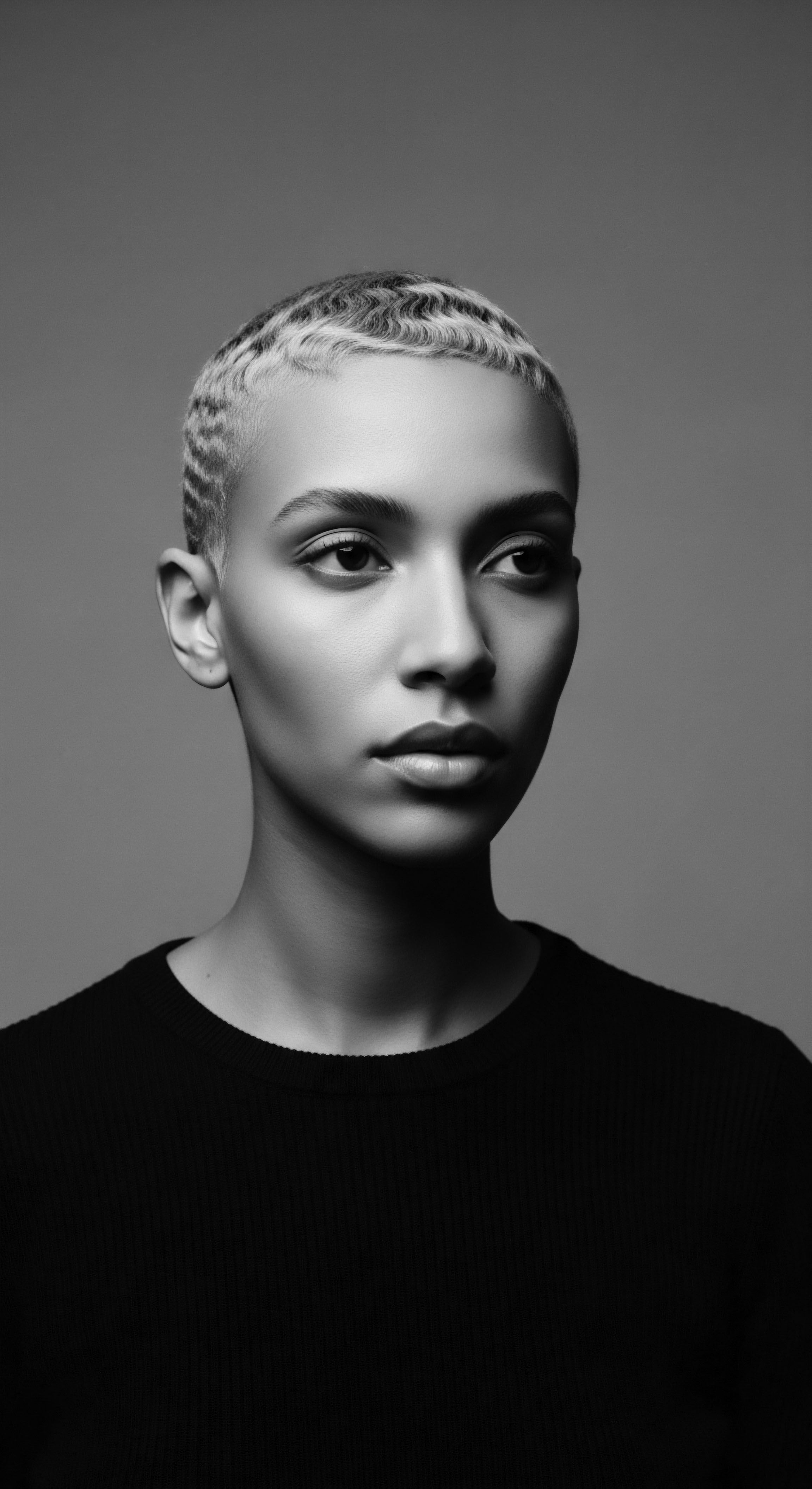
Ritual
As societies grew more complex, the act of hair care transcended mere utility, settling into the realm of ritual—a communal practice rich with social meaning and continuity. The tools themselves evolved, gaining refinement and specialized purpose, becoming central to the tender threads of kinship and cultural continuity. This period saw the deliberate crafting of implements for specific styling needs, reinforcing the deep, living traditions of care that continue to shape textured hair heritage. The tools became vehicles for stories, for status, and for unspoken communication within communities.
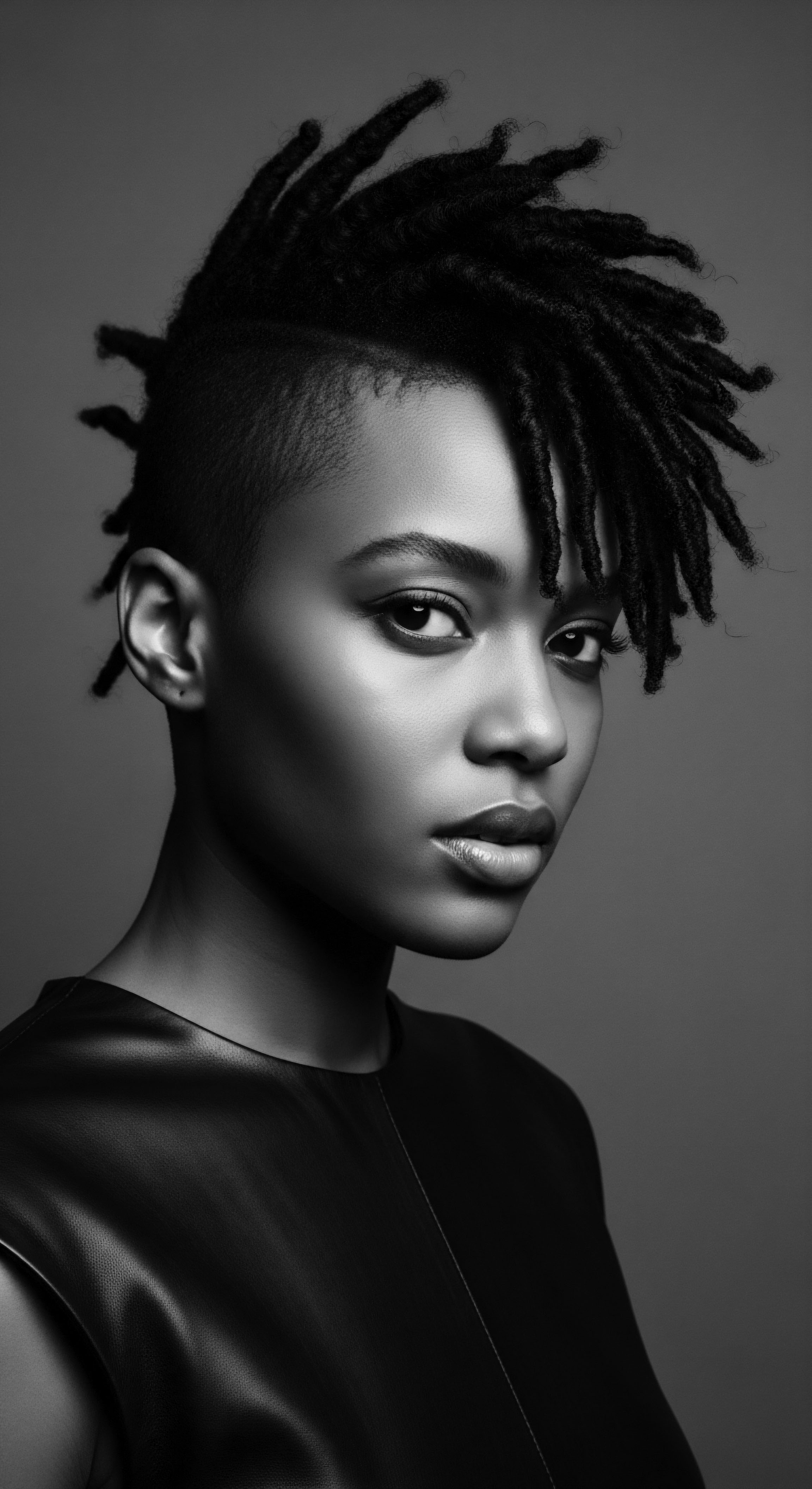
How Did Ancient Hair Practices Shape Early Tool Design?
The development of more specialized tools mirrored the growing complexity of hairstyles and their cultural significance. Combs, for instance, were not simply utilitarian items; they became art, often engraved with patterns that conveyed tribal identity, rank, fertility, or protection. In many African traditions, hair was regarded as the highest point of the body, a spiritual gateway, and hairstyles communicated age, marital status, and clan affiliation. This spiritual and social weight meant tools for hair care were often considered sacred, buried with their owners in a testament to their enduring value.
| Tool Category Combs |
| Ancestral Forms and Materials Bone, ivory, wood; wide-tooth, long-tined designs |
| Cultural Significance and Use Detangling, parting, styling; symbols of status, spirituality, and identity. Buried with owners |
| Tool Category Picks |
| Ancestral Forms and Materials Sharpened wood, bone; often with decorative handles |
| Cultural Significance and Use Lifting, creating volume, shaping large styles; extensions of personal expression |
| Tool Category Pins/Adornments |
| Ancestral Forms and Materials Bone, ivory, wood, metal, shells, beads |
| Cultural Significance and Use Securing styles, adding ornamentation; communicating social standing, marital status, or spiritual beliefs |
| Tool Category These early tools underscore a shared history where functionality intertwined with profound cultural and personal meaning. |
One powerful historical example of tool evolution tied to the textured hair heritage is the emergence of the Hot Comb. While widely believed to have originated in France in the late 19th century as a heated iron for straightening hair (often attributed to Marcel Grateau), its cultural resonance and development within the Black community represent a distinct chapter in the evolution of care instruments. The adaptation and popularization of the hot comb by pioneers like Annie Malone and Madam C.J. Walker transformed textured hair care in the United States.
Madam C.J. Walker, born Sarah Breedlove, built a haircare empire around the turn of the 20th century. While she did not invent the hot comb itself, she refined its use within a comprehensive system of scalp health and hair growth, marketing it to African American women. This tool, a metal comb heated over a stove or flame, provided a temporary method for straightening tightly coiled hair, allowing Black women to achieve smoother styles.
The widespread adoption of the hot comb was not simply a styling choice; it became a complex symbol. In an era marked by Eurocentric beauty standards and systemic discrimination, straightened hair was often perceived as a pathway to greater acceptance and opportunity.
The hot comb, a tool refined by Black innovators, became a complex instrument of both conformity and economic self-determination in the early 20th century.
The ritual of the “press and curl” became a rite of passage for many Black women, an intimate experience often shared between mothers, grandmothers, and hairdressers. This practice, despite its association with a push towards assimilation, also represented a form of agency and a means for Black women to navigate a society that often policed their appearance. The evolution of this single tool reveals the deeply layered meanings that hair care instruments can hold within a community’s heritage, reflecting both historical pressures and resilient adaptation.
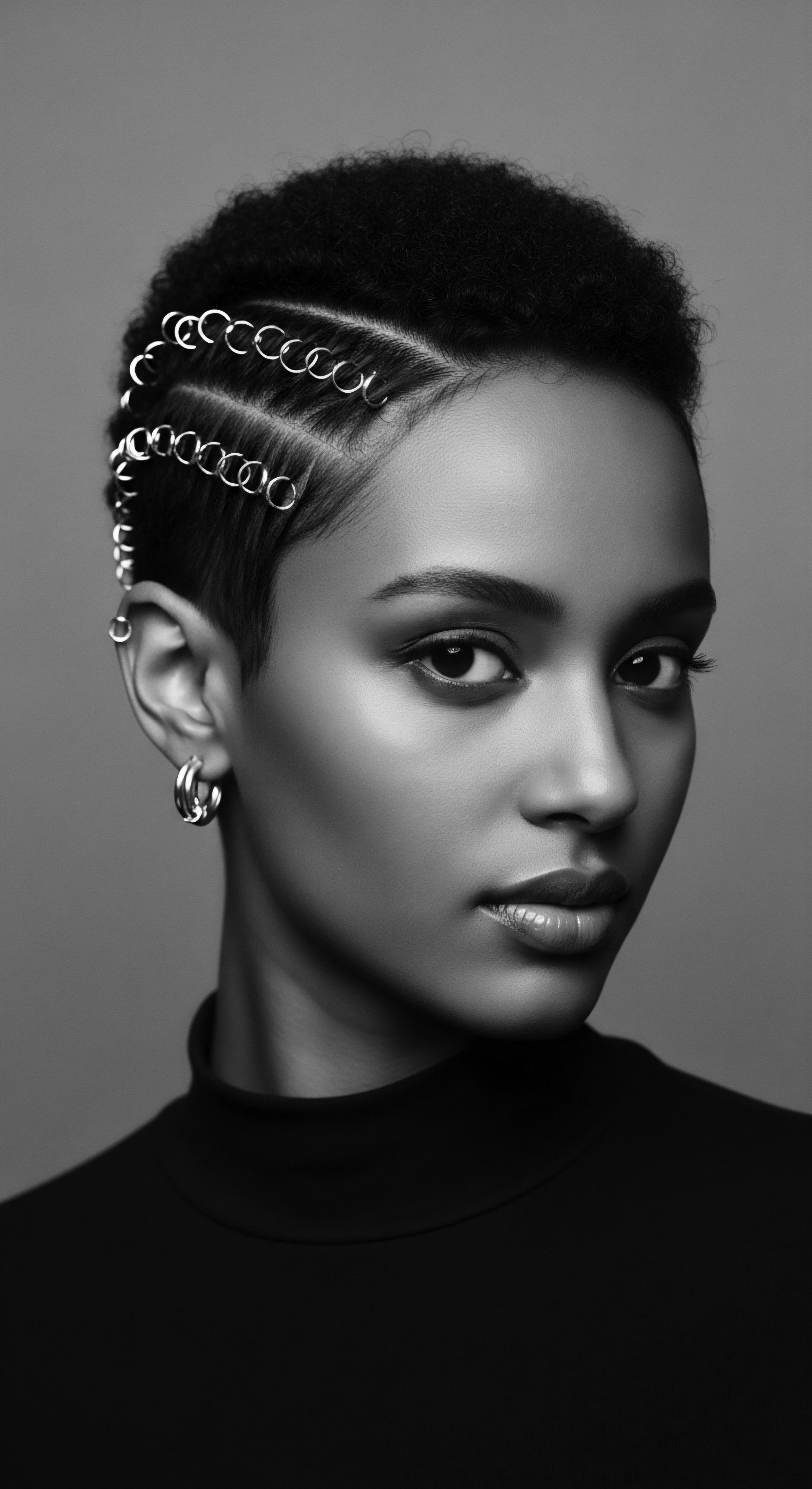
Relay
The journey of textured hair tools from ancestral hands to contemporary salons marks a relay of ingenuity, a continuous passing of the torch where ancient principles meet modern innovation. This period acknowledges the scientific understanding of hair, validating or offering fresh perspectives on practices honed over centuries. It is a story of adaptation, reclamation, and the enduring power of heritage to shape our future. The shift from rudimentary tools to sophisticated instruments often reflects broader societal changes, yet the core purpose—to care for and celebrate textured hair—remains steadfast.
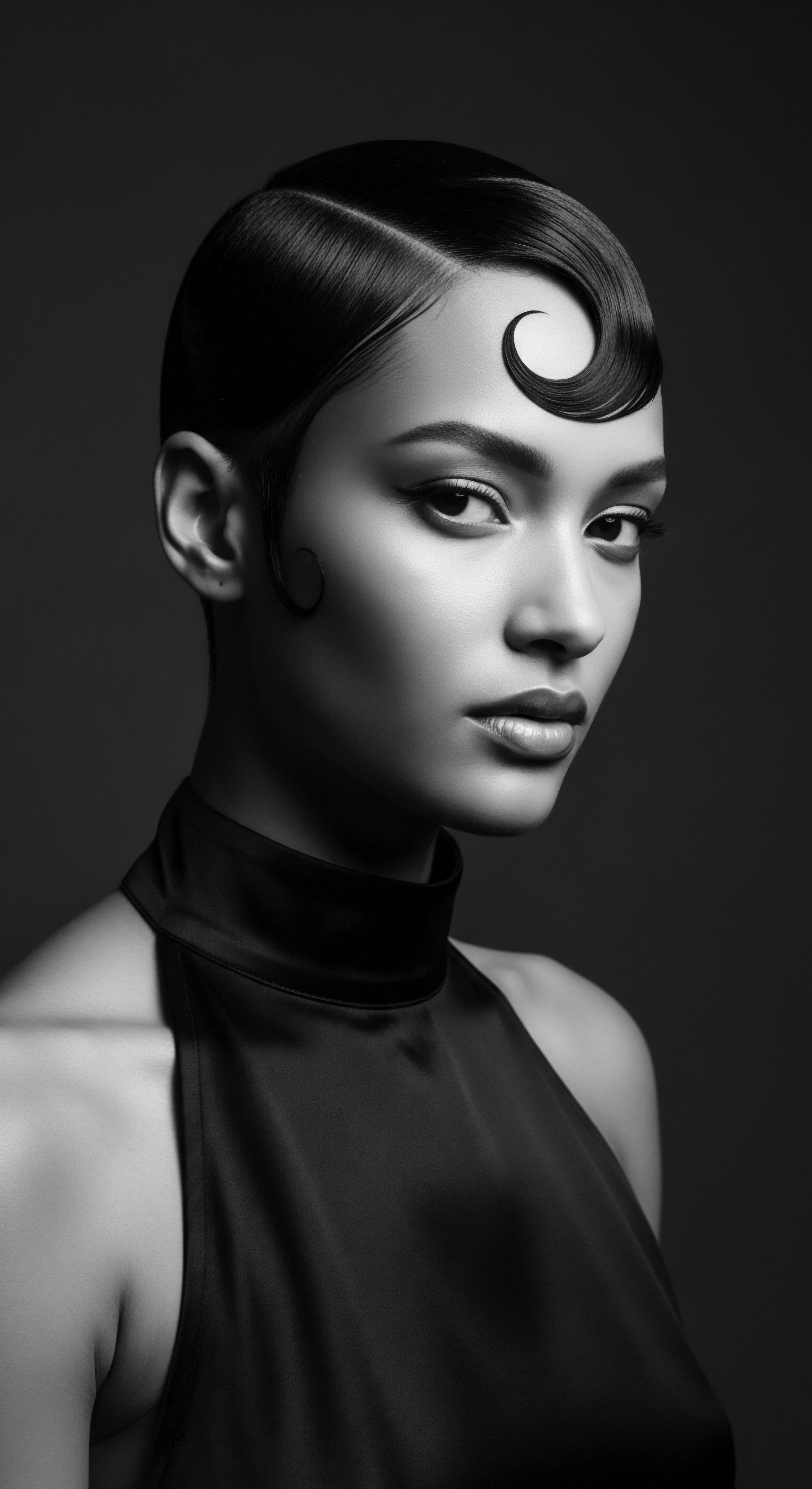
How Do Contemporary Tools Echo Ancestral Hair Care Science?
Modern hair care instruments, though appearing technologically advanced, often operate on principles that mirror ancestral understanding of hair properties. Consider the modern wide-tooth comb or detangling brush; their function is a direct continuation of the broad-tined wooden or bone combs used for millennia to gently separate coiled strands without breakage. The challenge of detangling tightly curled hair without damage is timeless, and the solutions, whether ancient or contemporary, prioritize minimizing stress on the delicate hair shaft.
The advancements in materials science have brought forth instruments made of specialized plastics, ceramics, and metals, designed for smoother glide, even heat distribution, or improved durability. Yet, their conceptual lineage traces back to simple, effective designs. The heated elements of modern flat irons and curling wands, for example, are refined iterations of the direct application of heat from ancestral hot combs or fire-heated implements. The goal remains consistent ❉ temporarily altering the hair’s protein bonds to achieve desired styling effects, albeit with greater precision and reduced potential for damage.

Modern Tools Rooted in Ancient Practices
The surge of the natural hair movement in recent decades has brought a renewed appreciation for tools that respect and enhance natural curl patterns. This cultural shift has spurred the creation of new instruments that are, in essence, modernized versions of ancestral aids.
- Detangling Brushes ❉ Many modern detangling brushes feature flexible bristles and open designs, akin to how early broad combs or even fingers would separate coils with minimal friction. These designs acknowledge the unique architecture of textured hair.
- Satin and Silk Accessories ❉ Bonnets, scarves, and pillowcases made of satin or silk directly address the need for hair protection during sleep, a wisdom likely understood by ancestors who might have used soft fabrics to shield hair from environmental aggressors. This practice minimizes friction and preserves moisture.
- Diffusers for Hair Dryers ❉ These attachments, designed to gently dry curls while maintaining their pattern, replicate the concept of air-drying or slow, protective drying methods our ancestors might have employed, minimizing harsh direct heat.
The cultural impact of these tools is profound. The afro comb, a direct descendant of ancient African combs, experienced a powerful resurgence during the Civil Rights Movement of the 1960s and 70s. Adorned with the iconic Black Power fist motif, it transformed from a functional item into a potent symbol of empowerment and resistance, a visual declaration of pride in Black identity and African heritage. This historical moment underscores how tools transcend their physical form to embody collective struggles and triumphs.
Natural ingredients, too, have seen a reclamation. Substances like Shea Butter, used for centuries in West Africa to moisturize skin and hair, are now mainstays in contemporary textured hair care formulations. Its properties, rich in vitamins, were recognized ancestrally for protecting hair from sun, wind, and dryness, and modern science validates its moisturizing and anti-inflammatory benefits. This enduring use of ancestral ingredients highlights a continuous lineage of holistic care philosophies.
The journey of hair tools is a dialogue between ancient wisdom and modern understanding, a continuum where heritage informs innovation.
The dialogue between ancient wisdom and contemporary understanding is perhaps most evident in the ongoing effort to understand the unique biology of textured hair. Modern science now quantifies the elliptical shape of follicles and the distribution of disulfide bonds that create curl patterns. This deeper scientific comprehension allows for the design of tools and products that work harmoniously with, rather than against, the hair’s natural inclinations, ultimately honoring its ancestral design. The evolution of instruments for textured hair care, then, is a testament to the persistent human desire for self-expression, well-being, and connection to a rich, enduring heritage.

Reflection
To hold a tool fashioned for textured hair, whether a hand-carved wooden comb from generations past or a contemporary brush designed for delicate coils, is to connect with a stream of shared memory. It is to feel the presence of countless hands that have, through ages, nurtured, styled, and celebrated the strands that crown Black and mixed-race heads. This exploration into the evolution of hair care instruments reveals that utility has always been interwoven with identity, and science with spirit. The implements we use today are not separate from the ones our ancestors employed; they are their descendants, carrying forward the whisper of ancient rituals and the strength of enduring traditions.
The tools, in their very being, tell a story of resilience—a narrative of communities who, despite forced assimilation and systemic oppression, held fast to their hair as a symbol of self and heritage. From the simple acts of caring for hair on communal Sundays, using rudimentary means during times of enslavement, to the purposeful designs of today, each tool represents a triumph of spirit. Our textured hair, in its glorious diversity, continues to serve as a living, breathing archive of this journey, where every curl and coil is a testament to a rich and unyielding legacy. The tools we choose, therefore, become a conscious act of participating in this ongoing story, honoring the past while shaping the future of care for textured hair.
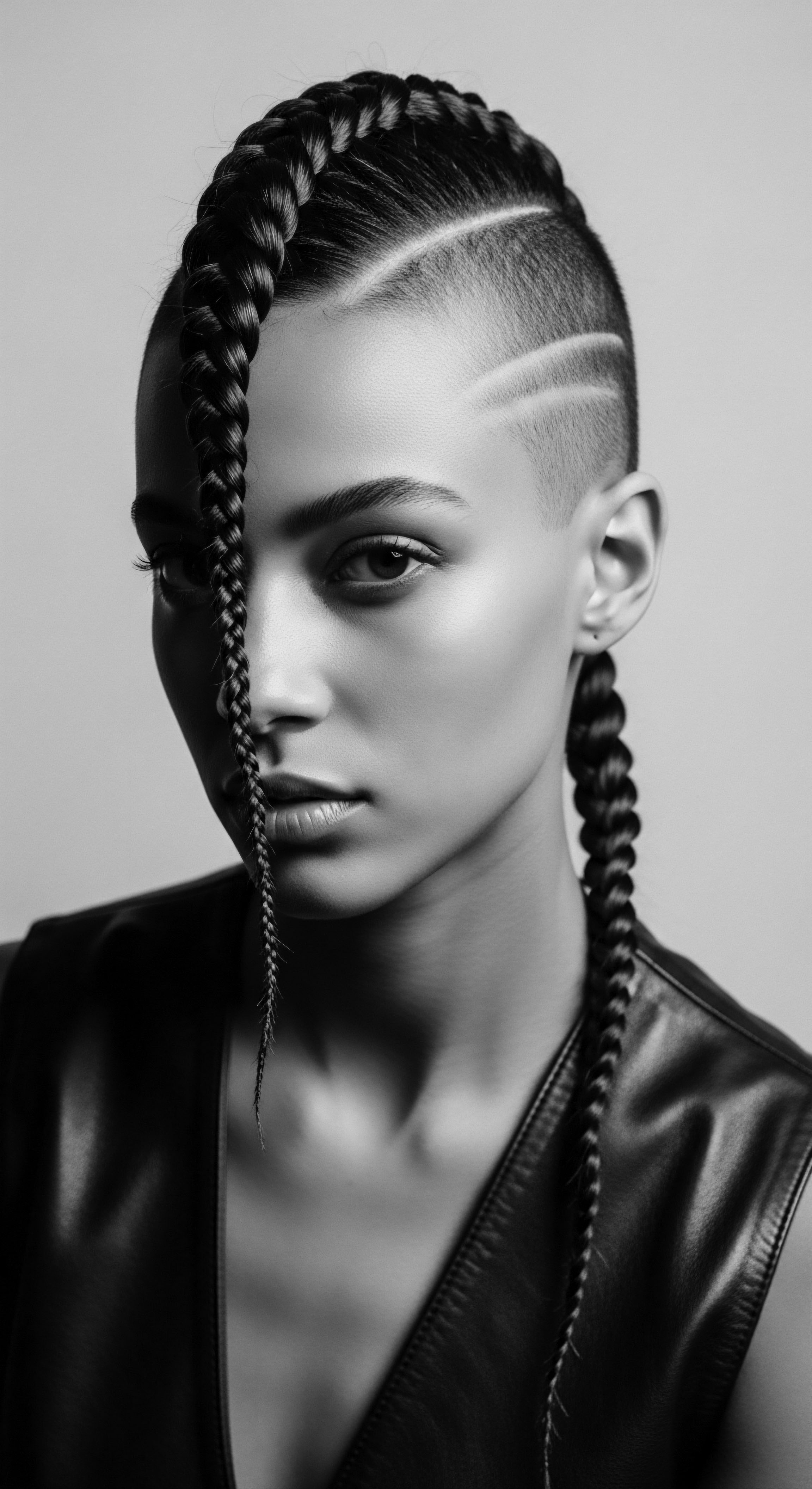
References
- Byrd, S. M. & Termorshuizen, L. R. (2014). The African-Americanization of the Beauty Industry. Palgrave Macmillan.
- Fletcher, J. (1995). Ancient Egyptian Hairdressing. In Beauty and the Body ❉ Fashioning the Female Form in Ancient Egypt (pp. 376, 441). British Museum Press.
- Petrie, W. M. F. & Mace, A. C. (1901). Diospolis Parva ❉ The Cemeteries of Abadiyeh and Hu, 1898-1899. Egypt Exploration Fund.
- Riefstahl, E. (1952). Thebes in the Time of Amenhotep III. The Metropolitan Museum of Art Bulletin, 10(9), 237-248.
- Walker, S. and Bierbrier, M. (1997). Ancient Faces ❉ Mummy Portraits from Roman Egypt. British Museum Press.
